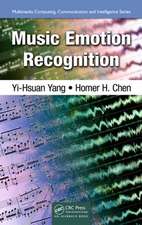Introduction to Bio-Ontologies: Chapman & Hall/CRC Computational Biology Series
Autor Peter N. Robinson, Sebastian Baueren Limba Engleză Paperback – 30 sep 2020
The first part of the book defines ontology and bio-ontologies. It also explains the importance of mathematical logic for understanding concepts of inference in bio-ontologies, discusses the probability and statistics topics necessary for understanding ontology algorithms, and describes ontology languages, including OBO (the preeminent language for bio-ontologies), RDF, RDFS, and OWL.
The second part covers significant bio-ontologies and their applications. The book presents the Gene Ontology; upper-level ontologies, such as the Basic Formal Ontology and the Relation Ontology; and current bio-ontologies, including several anatomy ontologies, Chemical Entities of Biological Interest, Sequence Ontology, Mammalian Phenotype Ontology, and Human Phenotype Ontology.
The third part of the text introduces the major graph-based algorithms for bio-ontologies. The authors discuss how these algorithms are used in overrepresentation analysis, model-based procedures, semantic similarity analysis, and Bayesian networks for molecular biology and biomedical applications.
With a focus on computational reasoning topics, the final part describes the ontology languages of the Semantic Web and their applications for inference. It covers the formal semantics of RDF and RDFS, OWL inference rules, a key inference algorithm, the SPARQL query language, and the state of the art for querying OWL ontologies.
Web Resource
Software and data designed to complement material in the text are available on the book’s website: http://bio-ontologies-book.org The site provides the R Robo package developed for the book, along with a compressed archive of data and ontology files used in some of the exercises. It also offers teaching/presentation slides and links to other relevant websites.
This book provides readers with the foundation to use ontologies as a starting point for new bioinformatics research projects or to support current molecular genetics research projects. By supplying a self-contained introduction to OBO ontologies and the Semantic Web, it bridges the gap between both fields and helps readers see what each can contribute to the analysis and understanding of biomedical data.
| Toate formatele și edițiile | Preț | Express |
|---|---|---|
| Paperback (1) | 305.97 lei 6-8 săpt. | |
| CRC Press – 30 sep 2020 | 305.97 lei 6-8 săpt. | |
| Hardback (1) | 603.31 lei 6-8 săpt. | |
| CRC Press – 22 iun 2011 | 603.31 lei 6-8 săpt. |
Din seria Chapman & Hall/CRC Computational Biology Series
-
 Preț: 346.48 lei
Preț: 346.48 lei - 9%
 Preț: 615.73 lei
Preț: 615.73 lei - 20%
 Preț: 389.57 lei
Preț: 389.57 lei -
 Preț: 357.22 lei
Preț: 357.22 lei -
 Preț: 357.97 lei
Preț: 357.97 lei -
 Preț: 357.69 lei
Preț: 357.69 lei -
 Preț: 357.16 lei
Preț: 357.16 lei - 9%
 Preț: 677.25 lei
Preț: 677.25 lei -
 Preț: 350.05 lei
Preț: 350.05 lei - 8%
 Preț: 528.20 lei
Preț: 528.20 lei - 20%
 Preț: 535.37 lei
Preț: 535.37 lei - 8%
 Preț: 406.96 lei
Preț: 406.96 lei -
 Preț: 370.11 lei
Preț: 370.11 lei - 8%
 Preț: 447.78 lei
Preț: 447.78 lei - 15%
 Preț: 699.14 lei
Preț: 699.14 lei - 22%
 Preț: 376.15 lei
Preț: 376.15 lei - 12%
 Preț: 305.97 lei
Preț: 305.97 lei -
 Preț: 422.44 lei
Preț: 422.44 lei - 5%
 Preț: 301.09 lei
Preț: 301.09 lei - 24%
 Preț: 702.77 lei
Preț: 702.77 lei - 15%
 Preț: 472.10 lei
Preț: 472.10 lei - 23%
 Preț: 492.08 lei
Preț: 492.08 lei - 15%
 Preț: 534.65 lei
Preț: 534.65 lei -
 Preț: 436.14 lei
Preț: 436.14 lei - 25%
 Preț: 529.77 lei
Preț: 529.77 lei -
 Preț: 455.01 lei
Preț: 455.01 lei - 18%
 Preț: 786.86 lei
Preț: 786.86 lei - 15%
 Preț: 468.17 lei
Preț: 468.17 lei - 20%
 Preț: 388.98 lei
Preț: 388.98 lei -
 Preț: 421.63 lei
Preț: 421.63 lei - 21%
 Preț: 1023.71 lei
Preț: 1023.71 lei - 25%
 Preț: 852.72 lei
Preț: 852.72 lei - 22%
 Preț: 460.87 lei
Preț: 460.87 lei - 15%
 Preț: 557.60 lei
Preț: 557.60 lei - 15%
 Preț: 556.77 lei
Preț: 556.77 lei
Preț: 305.97 lei
Preț vechi: 334.02 lei
-8% Nou
Puncte Express: 459
Preț estimativ în valută:
58.56€ • 60.35$ • 49.44£
58.56€ • 60.35$ • 49.44£
Carte tipărită la comandă
Livrare economică 03-17 martie
Preluare comenzi: 021 569.72.76
Specificații
ISBN-13: 9780367659271
ISBN-10: 0367659271
Pagini: 517
Dimensiuni: 156 x 234 mm
Greutate: 0.45 kg
Ediția:1
Editura: CRC Press
Colecția Chapman and Hall/CRC
Seria Chapman & Hall/CRC Computational Biology Series
ISBN-10: 0367659271
Pagini: 517
Dimensiuni: 156 x 234 mm
Greutate: 0.45 kg
Ediția:1
Editura: CRC Press
Colecția Chapman and Hall/CRC
Seria Chapman & Hall/CRC Computational Biology Series
Cuprins
Basic Concepts: Ontologies and Applications of Ontologies in Biomedicine. Mathematical Logic and Inference. Probability Theory and Statistics for Bio-Ontologies. Ontology Languages. Bio-Ontologies: The Gene Ontology. Upper-Level Ontologies. A Selective Survey of Bio-Ontologies. Graph Algorithms for Bio-Ontologies: Overrepresentation Analysis. Model-Based Approaches to GO Analysis. Semantic Similarity. Frequency-Aware Bayesian Network Searches in Attribute Ontologies. Inference in Ontologies: Inference in the Gene Ontology. RDFS Semantics and Inference. Inference in OWL Ontologies. Algorithmic Foundations of Computational Inference. SPARQL. Appendices. Bibliography. Index.
Notă biografică
Peter N. Robinson is a research scientist and leader of the Computational Biology Group in the Institute of Medical Genetics and Human Genetics at Charité-Universitätsmedizin Berlin. Dr. Robinson completed his medical education at the University of Pennsylvania, followed by an internship at Yale University. He also studied mathematics and computer science at Columbia University. His research interests involve the use of mathematical and bioinformatics models to understand biology and hereditary disease.
Sebastian Bauer is a research assistant in the Institute of Medical Genetics and Human Genetics at Charité-Universitätsmedizin Berlin. He earned a degree in computer science from the Technical University of Ilmenau. His research interests include mathematical modeling, discrete algorithms, theoretical computer science, software engineering, and the applications of these fields to medicine and biology.
Sebastian Bauer is a research assistant in the Institute of Medical Genetics and Human Genetics at Charité-Universitätsmedizin Berlin. He earned a degree in computer science from the Technical University of Ilmenau. His research interests include mathematical modeling, discrete algorithms, theoretical computer science, software engineering, and the applications of these fields to medicine and biology.
Recenzii
"This book is one of the first source books in the field; it is well written and coherent. Its introduction gives the reader a good taste of what comes next and it also contains good exercises."
—Mohsen Mahmoudi Aznaveh, ACM SIGACT News, 2013
"This welcome book could have been titled ‘all you wanted to know about bio-ontologies but didn’t dare ask.’ In recent years the biological sciences have generated very large, complex data sets whose management, analysis and sharing have created unprecedented challenges. The development of ontologies, originally driven by the invention of the semantic web, has been critical in handling this data and permitting interoperability between databases and between applications. Many of the bio-ontologies and the computational approaches which use them have now become mature, and an understanding of bio-ontologies has really become a requirement for anyone in the mainstream biomedical sciences.
Introduction to Bio-Ontologies provides a self-contained introduction to ontologies for bioinformaticians, computer scientists and biomedical scientists who need to know about the computational background and implementation of ontologies. The book is designed to support either advanced undergraduate or master’s courses in bioinformatics or computer science but is also a first stop for any investigator who wants to understand ontologies and how to use them.
The four parts of the book cover basic concepts, specific widely used ontologies, such as the Gene Ontology, algorithms and applications of ontologies. The breadth of coverage is impressive for such a compact volume and there is excellent critical discussion of ontologies from a biological as well as a computational point of view. The book succeeds well in its aim of providing a self-contained primer on ontologies and much of the mathematics used is backed up with detailed explanations and technical appendices which introduce and explain the more co
—Mohsen Mahmoudi Aznaveh, ACM SIGACT News, 2013
"This welcome book could have been titled ‘all you wanted to know about bio-ontologies but didn’t dare ask.’ In recent years the biological sciences have generated very large, complex data sets whose management, analysis and sharing have created unprecedented challenges. The development of ontologies, originally driven by the invention of the semantic web, has been critical in handling this data and permitting interoperability between databases and between applications. Many of the bio-ontologies and the computational approaches which use them have now become mature, and an understanding of bio-ontologies has really become a requirement for anyone in the mainstream biomedical sciences.
Introduction to Bio-Ontologies provides a self-contained introduction to ontologies for bioinformaticians, computer scientists and biomedical scientists who need to know about the computational background and implementation of ontologies. The book is designed to support either advanced undergraduate or master’s courses in bioinformatics or computer science but is also a first stop for any investigator who wants to understand ontologies and how to use them.
The four parts of the book cover basic concepts, specific widely used ontologies, such as the Gene Ontology, algorithms and applications of ontologies. The breadth of coverage is impressive for such a compact volume and there is excellent critical discussion of ontologies from a biological as well as a computational point of view. The book succeeds well in its aim of providing a self-contained primer on ontologies and much of the mathematics used is backed up with detailed explanations and technical appendices which introduce and explain the more co
Descriere
Exploring the computational background of ontologies, this self-contained text helps readers understand ontological algorithms and their applications. It describes a host of bio-ontologies, including Gene Ontology and Human Phenotype Ontology. The authors cover graph and inference algorithms and explain how these algorithms are used in biologica























